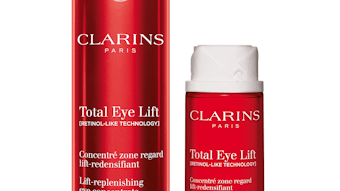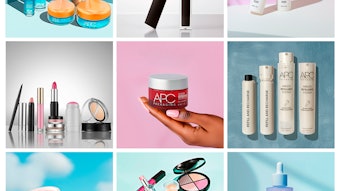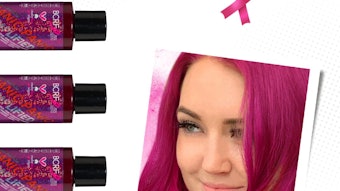When it comes to packaging, labeling is the cornerstone of first impressions. For consumers looking for that next great product, you’ve got to give them a reason to explore yours. Finicky and impressionable as most consumers are, getting them to give you more than a passing glance may not be easy—but it doesn’t have to be complicated, either. Following are label development strategies designed to help get consumers from first-look to first-buy:
1. Hit ’em Where They Ain’t
Onetime baseball great Wee Willie Keeler described this as his strategy for his renowned hitting prowess—simply hit the ball where no one can get to it fast enough to get the batter out. In the world of labeling, it of course refers to branding. You’ve got to look and feel different from your competitors and hit consumers in a memorable way that no else does.
One way to do this is color and design targeted to your audience. If your product targets young consumers, vibrant colors and daring design may be just the ticket. However, this look may turn away older consumers, who dismiss it as the label equivalent of total-body tattooing.
If your audience spans a wide demographic and psychographic spectrum, use a label concept that universally entertains, stimulates and/or delights. The old adage about “kids, animals and good-looking people” is old for a very good reason—it still works. Think about branding with enduring and endearing qualities—from the animals on the tails of Frontier Airlines planes and the Geico gecko to the babies featured on E-Trade and Capital One Cash Awards commercials.
And, for stimulation, one need look no further than the wealth of ads in which stunning models are featured.
In your labeling, either capitalize and concentrate on an image or concept already in use by the company—or use this as an excellent opportunity to develop one.
2. Grab ’em With Your Goodness.
Once you’ve gotten a potential customer to notice you and read on, make sure your messaging conveys information consistent with your company and brand values. If social consciousness is important to you, then consider using environmentally friendly labels to demonstrate your commitment to conservation and other green values.
For example, there is now a label made from stone—not trees. Yes, you read that correctly. BioStone and its adhesive are compostable. It can be recycled and re-used, and is both burnable and photo-degradable. There are others, such as Recycled Vellum and Recycled Kraft, as well. As with any label material, it’s important to know its limitations. BioStone can’t be laminated, so it’s not suitable for all applications.
Your label also can be used to promote a charitable or altruistic endeavor—from feeding starving kids to contributing to various disease-fighting efforts. Alternatively, label messaging can serve as a platform for spreading the word about a particular position or platform in alignment with company philosophy and values.
3. Make the “Fine Print” Legible to the Visually Impaired as Well as the Eagle-eyed
Easily readable labels send a message that the product manufacturer is sensitive to the needs of the consuming public. American Foundation for the Blind 2010 statistics state that 21.5 million American adults age 18 and older reported experiencing some level of vision loss or impairment. While an aging population contributes to some of this, many other conditions impact younger people as well.
Of course, there are limitations because of the label’s footprint—but consider ways to maximize readability in a confined space. Big and bold keywords such as “organic” and “all natural” can help, but make sure that consumers can access information to support the claim as well.
Even if the potential buyer is young and has 20/20 eyesight, that person may be buying for an elderly family member or friend. This is truly a case where the lowest common denominator of legibility for everyone can serve a brand well.
4. Make it Accurate, Grammatically Correct and Typo Free
Surprisingly, this is the Achilles heel of many otherwise excellent labels. For reasons that confound grammarians and spelling bee champions alike, information quality often gets sacrificed in the name of quantity. Perhaps it’s due in part to “big data” overload and the prevalence of texting and e-mailing, where improper grammar, spelling and typos are the norm.
None of this, however, makes label content mistakes acceptable. First of all, for a consumer initially attracted to a label’s look-and-feel, finding a mistake can be the sole reason for rejecting a product. In that consumer’s mind, if the label is flawed—connoting lack of attention to detail or competence—the product itself may be sub-standard.
Of course, it’s proven that many consumers either don’t notice—or care about—mistakes. But do you want to take the chance of winding up on Jay Leno’s “Headlines” segment, where he identifies flawed writings across the country?
Making sure the label accurately represents what’s in the product in a professional and flawless manner should be a high priority. When it comes to proofreading, once is never enough. Make sure multiple sets of eyes review the information, and don’t forget to proof revisions.
5. Make it Unique
Enhance the value of your product by making the label a “collectible.” Today, one-of-a-kind labels can be digitally printed as quickly and in the same price ballpark as one master label. Everything from sequential numbering to individual images on 10 to thousands of labels can be accommodated—creating the opportunity for “limited edition” attraction. One popular winery trend is to commission contemporary artwork for a label. Much like a limited edition print, labels featuring this art can be numbered—and become collectibles in their own right.
This can become a strong sales draw in and of itself, complementing the quality of the product. And, it can even bolster product popularity among lukewarm users. For example, millions of people watch the Super Bowl—but not just for the game. In fact, some watch primarily for the halftime show, and others for the commercials.
In the same way, purchasers may forgive a few product shortcomings if there are other compelling reasons to buy—such as a limited edition label.
In summary, brands that create distinctive and dynamic error-free labels can look forward to an excellent return on their label investment.
James Lowry is the general manager of Lightning Labels, a premier provider of labels, now celebrating its 10th year in business. He is a 25-year-veteran of the printing industry with experience in digital, flexo, offset and commercial printing. Mark Lusky is a marketing communications professional who has worked with Lightning Labels since 2008. The company works with customers as business partners to provide labels that will help them be successful. Overall value to customers is a strong balance of high quality print, dependability, service, fast delivery and fair pricing. 1-888-907-3004; [email protected]; www.lightninglabels.com









